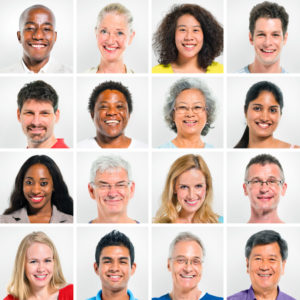 Social prejudice is still a major problem despite an ever-smaller world with rapid worldwide communications and increased diversity at every level. Even in advanced societies, academia, and science—places where it should not be expected—prejudice appears to be consciously and unconsciously ever present. Some forms of prejudice appear to be pathological, others are unconscious social learning. What can neuroscience studies say about prejudice and the brain? Do particular brain mechanisms contribute to preconception and stereotyping of other people?
Social prejudice is still a major problem despite an ever-smaller world with rapid worldwide communications and increased diversity at every level. Even in advanced societies, academia, and science—places where it should not be expected—prejudice appears to be consciously and unconsciously ever present. Some forms of prejudice appear to be pathological, others are unconscious social learning. What can neuroscience studies say about prejudice and the brain? Do particular brain mechanisms contribute to preconception and stereotyping of other people?
Human behavior is very complex, multi layered and difficult to define. The brain regions related to these concepts are even more complex. No one has yet figured out how emotions and thoughts interact in decision-making. For this discussion, prejudice will be defined as the attitudes and feelings about other types of ethnic, social, racial and religious people. These feelings can be related to people we don’t understand or have not experienced before. Another concept is stereotyping, which includes generalizations and ideas of characteristics of other groups, such as level of intelligence and capabilities. Just as there is overlap of feelings and ideas in decision-making, prejudice and stereotyping overlap. But, there are different brain circuits in each that meet in the higher cortical regions.
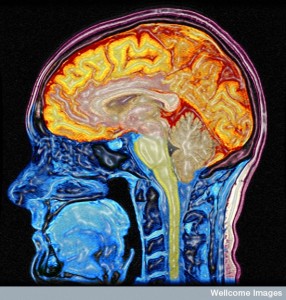 Previous posts have noted the great limitations of MRI and other imaging devices in understanding which parts of the brain are related to specific mental states. Is it possible from the current literature to say anything at all about prejudice and stereotyping in the brain? Many of the brain studies have been concerned with racial prejudice—historically, one of the most prevalent forms of mental stereotyping and prejudice. But, similar mechanisms might well be involved in bias related to ethnic, religious and national origins and gender and sexual preference.
Previous posts have noted the great limitations of MRI and other imaging devices in understanding which parts of the brain are related to specific mental states. Is it possible from the current literature to say anything at all about prejudice and stereotyping in the brain? Many of the brain studies have been concerned with racial prejudice—historically, one of the most prevalent forms of mental stereotyping and prejudice. But, similar mechanisms might well be involved in bias related to ethnic, religious and national origins and gender and sexual preference.
Because stereotyping and prejudice involve both cognitive processes and emotional reactions, research has focused on key regions in the brain: amygdala, insula, striatum, and cortical regions of the orbital and ventromedial frontal.
Many of these regions have been discussed in other posts. Please see the posts on the Complexity of the Frontal Lobes and those on Emotions and Time.
Amydgala and Prejudice
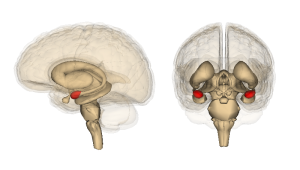
There are many different regions of the amygdala, making it much more complex than merely the “fear” center. Amygdala centers are very active in many types of behavior. All senses come together in one Amygdala region—the lateral nucleus—which then can produce a rapid response to trouble and threats. In the rapid responses to a potentially threatening events, behaviors are triggered with very little evaluation and thought.
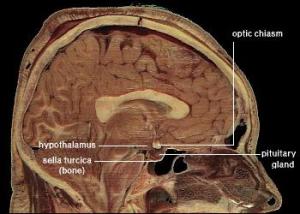 A second region of the Amygdala has been shown to be prominent in conditioned fear responses, such as when we are trained to fear a particular stimulus. This central region is highly connected with the sympathetic autonomic system, which is famous for the fight or flight reaction.
A second region of the Amygdala has been shown to be prominent in conditioned fear responses, such as when we are trained to fear a particular stimulus. This central region is highly connected with the sympathetic autonomic system, which is famous for the fight or flight reaction.
Other central brain regions that are part of this fear arousal are the hypothalamus and additional brainstem regions producing extreme attention, freezing of other activities and preparations for defense. Together the hypothalamus and sympathetic system are the centers that most prepare us to deal with sudden danger and are, also, highly connected with the experience of fear.
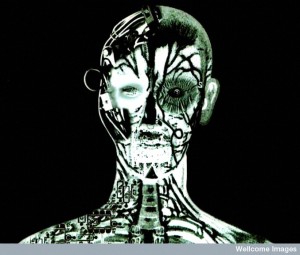 However, the amygdala is, also, involved in any strongly goal directed activity such as hunger and eating. The goal direction emphasis of the amygdala is experienced both in the fearful, defensive response and other activities with high motivation such as eating.
However, the amygdala is, also, involved in any strongly goal directed activity such as hunger and eating. The goal direction emphasis of the amygdala is experienced both in the fearful, defensive response and other activities with high motivation such as eating.
Another region of the amygdala is very related to fear inducing facial expressions. Research shows subtle differences in the reactions to faces that are not from the same group as the observer, including startle eye blink responses. Even when the faces were flashed at a very rapid rate, the difference persisted in the particular central region of the amygdala that is connected to arousal and fear.
When the subjects were motivated to not have any prejudice, these facial fear responses decreased. The mechanisms were conditioning of fear such as in a Pavlov experiment.
 This experiment raised the question whether these responses can be diminished and extinguished. Further research showed that stimulation of these amygdala regions is related to a fear of “others” rather than ones own group. Also, the stimulation was greater with direct eye contact and when there is superficial information presented previous to the viewing.
This experiment raised the question whether these responses can be diminished and extinguished. Further research showed that stimulation of these amygdala regions is related to a fear of “others” rather than ones own group. Also, the stimulation was greater with direct eye contact and when there is superficial information presented previous to the viewing.
Importantly, the faster the image of the face, the greater is the amygdala fear reaction because there is less time to consider the reaction. Those who have some familiarity with the other group have less of these responses.
A reverse process was, also, noted: reactions for those who are worried about appearing prejudiced. In this situation those who were most concerned about appearing to be prejudiced had a greater startle reaction than those who didn’t care.
An unusual finding occurs when the experiment introduces other goals totally unrelated to the face, such as identifying some detail on the image. In these experiments, the facial fearful responses were decreased. When the flashed faces were members of teams of diverse people, then the facial response did not occur with anyone in the subjects group, but rather the “other” team. The amygdala responded to specific goals, when they are emphasized, rather than just the “others.” The region in the amygdala most related to this reaction was the basal nucleus.
Orbital Frontal Cortex and Prejudice
For more details of this center see the post on the Complexity of the Frontal Lobe.
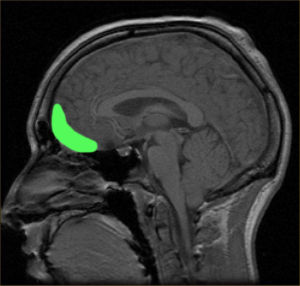 As mentioned in that previous post, the OFC is often considered part of the ventral medial prefrontal Cortex (vmPFC). This region is very complex and is related to many aspects of decision-making including motivation and emotional factors. It is related to monitoring social situations.
As mentioned in that previous post, the OFC is often considered part of the ventral medial prefrontal Cortex (vmPFC). This region is very complex and is related to many aspects of decision-making including motivation and emotional factors. It is related to monitoring social situations.
All of the senses are connected to the OFC, as well as the regions most associated with emotions and social intelligence. It is correlated with reflective responses rather than the rapid fire response of the amygdala and is related to social interactions of “in group” and “other groups”.
The OFC is triggered when thoughtful decisions are being made as opposed to “gut” reactions. The complex questions of how to relate “others” that are not understood trigger OFC activity. This region has been shown in research to be possibly activated in questions related to the preference for ones own team rather than the other team at work or in sports, unrelated to ethnic and other characteristics.
This center appears to be important going forward in figuring out how to limit prejudice.
Insula and Prejudice
 The insula has been written about in a number of posts as the major high level region that has body and time maps. It is, also, related to higher emotional understanding. It is the highest representation of the entire body and is critical for visceral reactions, that is the relation of feelings and the bodily organs.
The insula has been written about in a number of posts as the major high level region that has body and time maps. It is, also, related to higher emotional understanding. It is the highest representation of the entire body and is critical for visceral reactions, that is the relation of feelings and the bodily organs.
One center in the insula is the primary place where we understand the working of our own bodies. Another region, the anterior insula, appears to be related to thinking and feeling about this understanding of our body.
Bodily understanding connects with the high cortical centers of the anterior cingulate cortex (ACC) and the prefrontal cortex. These regions are involved in the connection of thinking and feeling in decision making. The anterior insula is most connected with social intelligence.
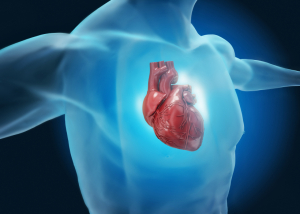 The anterior insula is related to decisions and feelings about the “other” group versus the “in group”. It appears to contribute to an element of disgust for the “other” group. This high level region correlates with prejudice and stereotyping. Because of its wide connections to other cortical centers, it can possibly help in identifying and self-regulating prejudicial attitudes and behaviors.
The anterior insula is related to decisions and feelings about the “other” group versus the “in group”. It appears to contribute to an element of disgust for the “other” group. This high level region correlates with prejudice and stereotyping. Because of its wide connections to other cortical centers, it can possibly help in identifying and self-regulating prejudicial attitudes and behaviors.
The insula is very correlated with compassion and empathy towards those of whom there is a positive view. It is activated when people are being harmed, but only if they are they are part of the in-group or the liked group, but not the “others”. Empathy activity is related to attitude and affiliation. In other research, rewards to the “other” group caused activation with envy and feelings to harm them.
The insula, therefore, produces bodily visceral feelings that are higher form of the stereotyping and prejudice.
Striatum and Prejudice
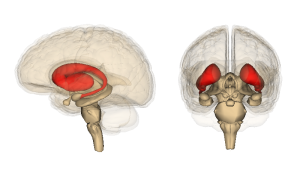 The striatum is a part of the brain that is correlated with focused goal oriented learning and rewards from this goal directed behavior. It is highly connected with habit unconscious learning.
The striatum is a part of the brain that is correlated with focused goal oriented learning and rewards from this goal directed behavior. It is highly connected with habit unconscious learning.
The striatum is involved with the decision-making centers of the pre frontal cortex and with the centers that activate movement and activity. Many economic neuroscientists have studied this center because of its relation to activity and reward—that is, what will bring about behavior that we are happy about and how we will value doing certain activities.
The striatum, also, is more activated by the in-group than that of “others”.
Medial Pre Frontal Cortex and Prejudice
 The mPFC is one of the highest cortical regions related to social intelligence. It is connected with the ACC, the OFC, the insula and many other parts of the cortex for high-level decision-making. It is the region that might be most about considering other people and trying to understand what they are thinking and feeling, and particularly, what they want. It is activated when people think about other people rather than objects.
The mPFC is one of the highest cortical regions related to social intelligence. It is connected with the ACC, the OFC, the insula and many other parts of the cortex for high-level decision-making. It is the region that might be most about considering other people and trying to understand what they are thinking and feeling, and particularly, what they want. It is activated when people think about other people rather than objects.
Normally, the mPFC is stimulated when thinking of other people. However, when this region is not activated during a social interaction, is it possible that it demonstrates a dehumanization of those “others”—a form of prejudice and lack of empathy? This region does repond more to “liked” people, rather than “others”. When viewing someone being harmed, the region activates only for the in group, not “others”. Those who espoused blatant prejudicial attitudes had low activity when viewing “others”.
Many have commented on the dehumanization as a mechanism of prejudice.
Is There A Prejudice Circuit?
Prejudice involves circuits of feelings. Threat stimulates the amygdala causing unthinking rapid reactions. More slowly, the amygdala gives clues about “others” for higher centers. It can do the opposite as well. The other centers noted above could form a circuit. Negative affect with prejudiced response activates the insula. Negative thoughts about “others” are represented in the PFC. Positive attitudes and goals about the in-group stimulate the striatum. But, it is not certain this is the circuit.
Stereotyping Involves Circuits of Cognition and Evaluation.
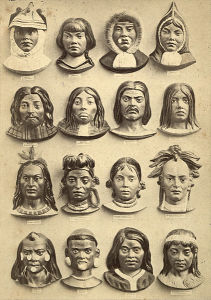 Stereotyped impressions and concepts are activated into memory and made part of judgments and activity by higher cortical centers. The circuits for stereotyping are different than that of prejudice: temporal lobe, inferior frontal gyrus and medial PFC.
Stereotyped impressions and concepts are activated into memory and made part of judgments and activity by higher cortical centers. The circuits for stereotyping are different than that of prejudice: temporal lobe, inferior frontal gyrus and medial PFC.
Temporal Lobe and Stereotyping
Stereotypes are more concepts than feelings and visceral states. Parts of the temporal lobe are associated with knowledge of words and ideas including those about social situations. These concepts are related to people not things, as in the mPFC. The temporal centers are highly connected with the mPFC related to judgments and decision-making. The anterior region was uniquely triggered in judgments related to stereotypes.
Medial PFC and Stereotyping
This region is related to ideas about oneself and other people, both feelings and ideas. Therefore, it is related to both prejudice and stereotyping. As noted in the previous post, Complexity of the Frontal Lobes, it is a region with many connections.
Lateral PFC and Stereotyping
Other frontal regions are particularly related to choosing what is in current thought, known as working memory, for behavior to accomplish a particular goal. These complex regions are highly connected with cortex regions for movement and activity and the striatum mentioned above. These functions are connected with stereotyping.
Stereotyping Stimulates Behavior With Certain Presuppositions.
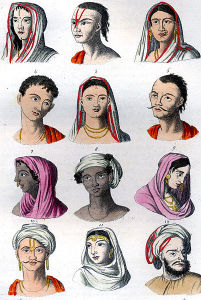 Stereotyping circuits are connected with higher cortical areas. First impressions are formed. Then specific words, concepts and experiences are chosen as a basis of judgment. Regions of social intelligence and motor activity then implement behavior.
Stereotyping circuits are connected with higher cortical areas. First impressions are formed. Then specific words, concepts and experiences are chosen as a basis of judgment. Regions of social intelligence and motor activity then implement behavior.
There has been no way to separate thoughts and feelings in the brain, when decision-making clearly involves both. So both prejudice based on visceral feelings and stereotypes based on concepts interact as thoughts and feelings do in every area of life.
Many centers discussed above have convergence in both activities, such as the amygdala, the OFC, insula and striatum as well as higher cortical regions.
Meditation Trains Conscious Choice and Learning – Self Awareness Can Counter Stereotypes and Prejudice
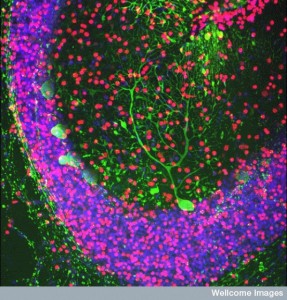 The ACC is central for conflict resolution and control of cognitive processes. Cognitive control is needed to regulate unconscious prejudice and stereotyping as well as any other social pressure and internal conflicts. Studies have identified ACC in controlling stereotyping. When exposed to prejudicial situations, feelings and stereotypic concepts, conscious effort is needed to expose this and rebut it.
The ACC is central for conflict resolution and control of cognitive processes. Cognitive control is needed to regulate unconscious prejudice and stereotyping as well as any other social pressure and internal conflicts. Studies have identified ACC in controlling stereotyping. When exposed to prejudicial situations, feelings and stereotypic concepts, conscious effort is needed to expose this and rebut it.
The prefrontal cortex is, also, involved in the control of behavior and attention. Facing issues of in-group and “others” involves unconscious activity in the PFC. Conscious modification involves the same regions. Imaging studies show that specific regions are triggered for those who are able to counteract the prejudice and stereotyping. Clearly, those regions involved in determining what other people are like and what they are thinking are, also, involved. Self-control is critical for ordinary function, and certainly for social behavior.
Fear conditioning and unconscious conceptual bias are insidious and can only be counteracted by applying conscious self observation, learning, behavior modification and active conscious control. Training needs to involve both ongoing conceptual analyses, as well as fear extinction through behavioral approaches. Behavioral techniques to deal with the “other” in new ways, through self-observation and control, are essential. Then new concepts can be learned internally.
Internal mental processes can alter stereotypes and prejudice. Previous posts have discussed the importance of constant environmental suggestions on unconscious decision-making. In order not to fall prey to these unconscious processes, conscious activity is necessary.
 A previous post discussed how neuroscience does not disproves free will. The problem with free will is that it has to be activated and used; for that, conscious choice is necessary.
A previous post discussed how neuroscience does not disproves free will. The problem with free will is that it has to be activated and used; for that, conscious choice is necessary.
It is accurate to say that conscious choice is often not activated in ordinary life and, therefore, unconscious suggestions and pressures determine many behaviors. In fact, many people are unaware of their potential for conscious choice, and instead are buffeted constantly by social pressures and environmental suggestions. To actively counteract these forces, it is necessary to use conscious evaluation and choice.
Two posts are relevant to understand the process whereby prejudice can be altered. One describes self-observation altering perception. Another describes using breath for altering perceptions, including fear.
 Meditation is the most studied conscious activity, and has been shown to have dramatic positive effects on stress, the immune system and multiple diseases. Meditation exercises build the muscle for conscious activity. With meditation training, the mind is trained in attention and focus and the brain becomes more regulated (see post on meditation).
Meditation is the most studied conscious activity, and has been shown to have dramatic positive effects on stress, the immune system and multiple diseases. Meditation exercises build the muscle for conscious activity. With meditation training, the mind is trained in attention and focus and the brain becomes more regulated (see post on meditation).
The post on suggestion demonstrates that everyone is pressured by social circumstances and random stimuli. It is only through conscious control of the random unconscious suggestions that they can be counteracted. The same is true of non random peer pressures that have become unconscious.
Where Prejudice and Stereotypes Reside in the Brain
 Complex brain circuits are correlated with prejudice and stereotyping. Prejudicial behavior is based on multiple inputs—a rapid amygdala fear response, higher-level slower emotional responses, and conceptual cognitive responses. All of these are trained, mostly by unconscious social suggestions, except for truly dangerous situations where the fight and flight responses are life saving.
Complex brain circuits are correlated with prejudice and stereotyping. Prejudicial behavior is based on multiple inputs—a rapid amygdala fear response, higher-level slower emotional responses, and conceptual cognitive responses. All of these are trained, mostly by unconscious social suggestions, except for truly dangerous situations where the fight and flight responses are life saving.
With unconscious behaviors, self observation, reflection, conscious choice and behavioral training are helpful to counteract prejudice and stereotyping. Meditation and reflection are excellent ways to increase the ability to identify and rebut unconscious forces and make these conscious decisions.